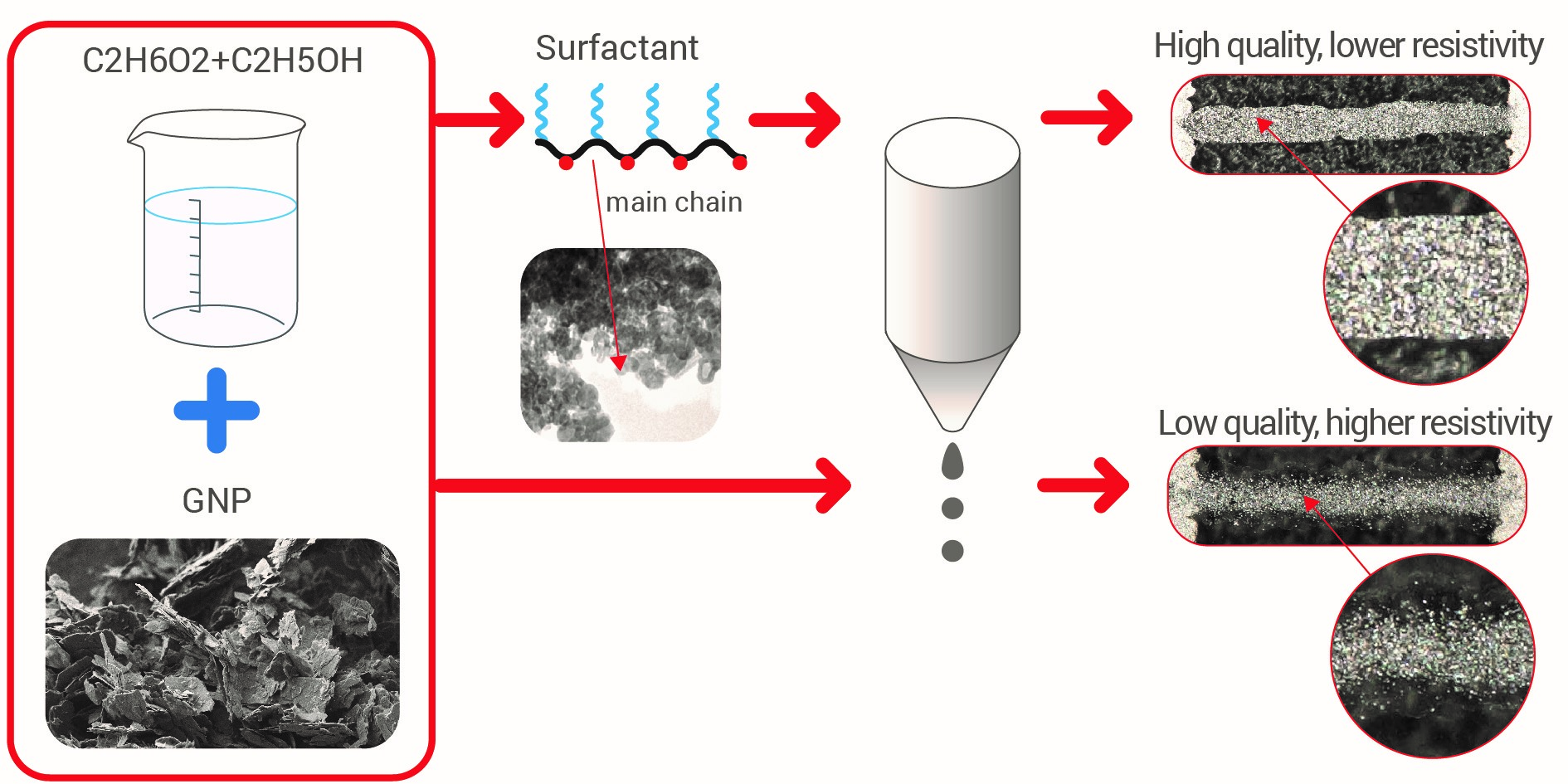
Inkjet printing is an excellent printing technique and an attractive alternative to conventional technologies for the production of flexible, low-cost microelectronic devices. Among many parameters that have a significant impact on the correctness of the printing process, the most important is ink viscosity. During the printing process, the ink is influenced by different strains and forces, which significantly change the printing results. The authors present a model and calculations referring to the shear rate of ink in an inkjet printer nozzle. Supporting experiments were conducted, proving the model assumptions for two different ink formulations: initial ink and with the addition of a dispersing agent. The most important findings are summarized by the process window regime of parameters, which is much broader for the inks with a dispersing agent. Such inks exhibit preferable viscosity, better print-ability, and higher path quality with lower resistivity. Presented results allow stating that proper, stable graphene inks adjusted for inkjet technique rheology must contain modifiers such as dispersing agents to be effectively printed.

